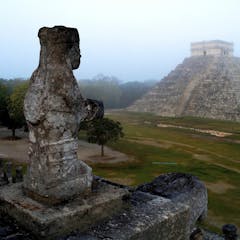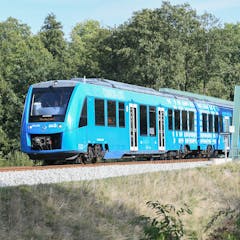
Articles sur Railways
Affichage de 21 à 40 de 80 articles

Transit agencies could use the money to buy new subway cars, buses and maintain rails. The funding is designed to build on last year’s emergency aid, which kept transit operating through the pandemic.

Geographers are documenting slave-built infrastructure, from railroads to ports, in use today. Such work could influence the reparations debate by showing how slavery still props up the US economy.

A review of all public road and rail projects worth $20 million or more and completed since 2001 reveals a 21% cost overrun. Worryingly, costs of bigger projects blew out more often and by more.

Hyperloop might still be a dream but new technologies promise to make trains faster and safer.

A devastating historical exposé of South Africa’s mining industry and the railway system that maximised the exploitation of cheap Mozambican labour.

Road and rail construction is booming in sub-Saharan Africa, but the pandemic has brought a welcome pause for reflection.

The UK cannot wait 30 years for a modern rail network.

High-profile rail and aerospace disasters of recent years have been the deadly consequence of the systematic erosion of safety precautions due to deregulation.

Since 2019, night train networks have seen a remarkable revival across Europe.

Electric trains use seven times less carbon dioxide than cars. With careful planning, railways could drastically cut emissions from a sector that now accounts for a quarter of the carbon in our air.

Born the same year as Queen Victoria, Eliot faced similar life choices to many young women today

It’s hotter and more crowded on the Underground but some things have got better for commuters.

An ambitious new train would link resorts like Cancun to inland ancient ruins and colonial towns. That means laying rail across 932 miles of dense jungle, pristine beach and indigenous villages.

Though formed by the state, Eskom and Iscor enjoyed very little state support in their infancy. To survive, they had to cooperate with the private sector companies they were meant to compete with.

Driverless cars will form a fast, efficient transport network, which will make car ownership redundant. But they could also spell the end of public transport.

Just as America’s highways, sewage systems and water pipes need fixing, so does the growing gap between rich and poor. Trump and the Democrats could use that money to address both.

Fuel cells are being touted as an alternative to costly electrification – but no one knows if they’ll really be cheaper.

The Belt and Road Initiative will not be starting entirely from scratch. China has already invested heavily in several African railways.

With train fares looking set to rise, there are some simple rules you can follow to get the best value tickets.

Planners have long tried to determine the ideal city size, and ideas have evolved with changing circumstances. But a good city depends more on the way it’s managed than on how many people it holds.
